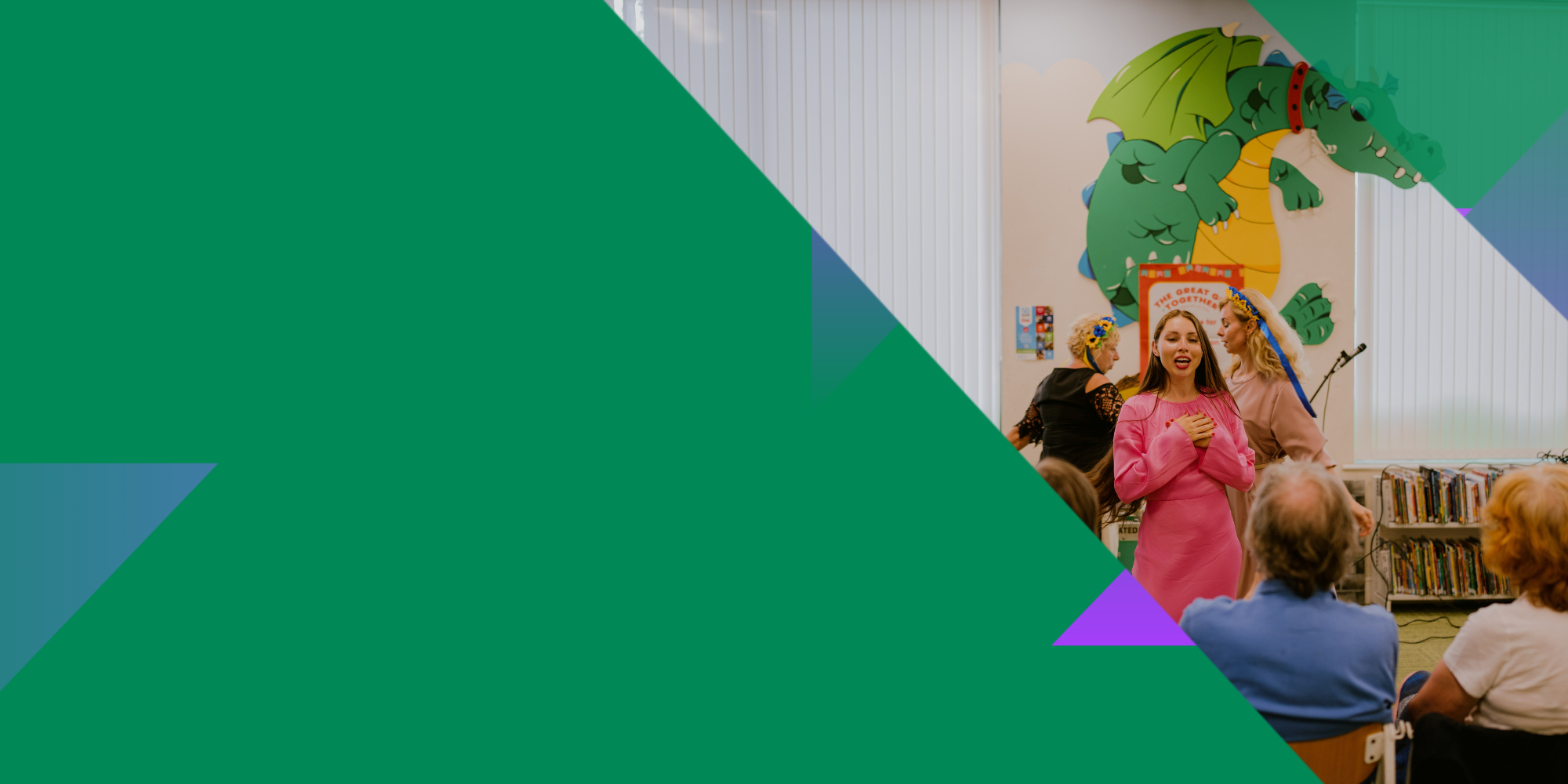We supported the Jo Cox Foundation to explore community connection and social action through The Great Get Together.
Impact & Learning
Key achievements
- Over 500 Great Get Together and 1,100 Great Winter Get Together events in 2023, and over 650 Great Get Together events in 2024
- Impact data from 2023 showed that 85% of attendees were inspired to make new connections with people from different backgrounds after attending a Great Get Together.
- 97% of attendees at the 2023 Great Get Together reporting that participation positively affected their mental health and wellbeing.
- In their 2022 impact report, the Jo Cox Foundation found that 71% of participants felt less lonely and 93% of participants feel more connected to their neighbours.
- 90% of all organisers said that they felt confident organising inclusive community events after their Great Get Together
- Expansion of the More in Common Network, from five informal groups at the beginning of the project, to ten fully incorporated groups and twelve potential groups on the development pathway upon closure of the grant.
- The development of a sustainable More in Common partnership model, bringing organisations together to enhance social connection in their local areas.
The impact on individual volunteers could be profound, as Martyn from Batley and Spen explains in the project evaluation:
“The whole idea that I could be involved with this would have, at times, in the last decade been a fanciful notion to me. I have had a difficult decade. My own mental health seeing me often in despair and hospitalised, feeling helpless and optionless. I spent five whole years trapped in the house, agoraphobia biting deep. I guess though, despite still often being hugely anxious, I am emerging from the debacle that was the life lost to the cursed mental breakdown.
Personally, I still feel a little shocked at how I felt in those planning meetings, so engaged and driven. There was so much healing and recovery and reconnection with skills and experience I thought I no longer had, thanks to the encouragement, engagement and positive endorsement I got from those six or seven weeks being on that planning group. To all of the team involved, I feel I owe so much to them.”
Key learnings
- Top tips to promote social mixing: Great Get Together organisers built up a collection of learning about how to encourage social connection through their events, from focusing on the initial welcome, to ‘conversation starter’ printouts, to the sorts of games and activities that helped break the ice. Being part of a wider network of volunteers doing the same thing allowed this good practice to spread, as well a space to share things that hadn’t gone so well and seek practical advice from peers. Giving feedback on More in Common training, one volunteer explained: “I felt motivated. It gets quite tiring and overwhelming doing community work. But coming to events like this helps inspire me by hearing and learning from others.”
- Flexible delivery under a common theme: Across the four years, JCF explored different versions of the Great Get Together, moving away from the traditional community lunch (though this was still important in many areas!) to include activities such as the Great Read Together, the Great Watch Together with Cinema for All, and the Great Walk Together. Being part of something bigger was an important motivator, as one volunteer explained “We can see that it’s a national movement that we’re part of and that makes us feel good. And it helps keep us going.” The underlying message of ‘more in common’ gave a unifying purpose to these disparate activities, whilst the variety helped to bring in more people. JCF report that the Great Walk Together, in collaboration with Refugee Week was particularly successful – walking was an activity with a low barrier to entry which provided a little more structure than a lunch or coffee morning. The Great Walk Together toolkit was downloaded over 1000 times.
- Diversifying volunteering: Between 28% (Year 3) and 31% (Year 4) of community event organisers identified as disabled, and feedback from disabled volunteers suggested that the shift to online meetings and activities due to COVID had helped them get more involved in community life than they would have been able to previously. The Jo Cox Foundation were more successful in diversifying their participant base than their volunteer base. Volunteer organisers wanted to reflect the diversity of their area, but did not always know where to start particularly as groups often sprung from existing friendship networks, making them more likely to be homogenous. As one volunteer explained, “I’d like our group to be much more diverse than it is… We’ve got a whole range of different sorts of people, but we’re all … how can I put it? Not that young. We’re all vaguely middle class. We’re all vaguely left wing. And we’re all, apart from one or two people, white.”
- Monitoring and Evaluation: Gathering accurate data to measure participant numbers and their demographic makeup was challenging, even before considering outcomes measurement. Organisations such as JCF are often incentivised to focus on reporting high participant numbers to help secure additional funding – something we hoped to reduce by providing a multiyear grant focused on learning rather than set KPIs. Rolling out tools such as the Social Value of Community Events toolkit or adopting a Case Study Synthesis approach may have strengthened the ability of JCF and individual volunteer-led projects to collect proportionate data they could use for ongoing improvement.

